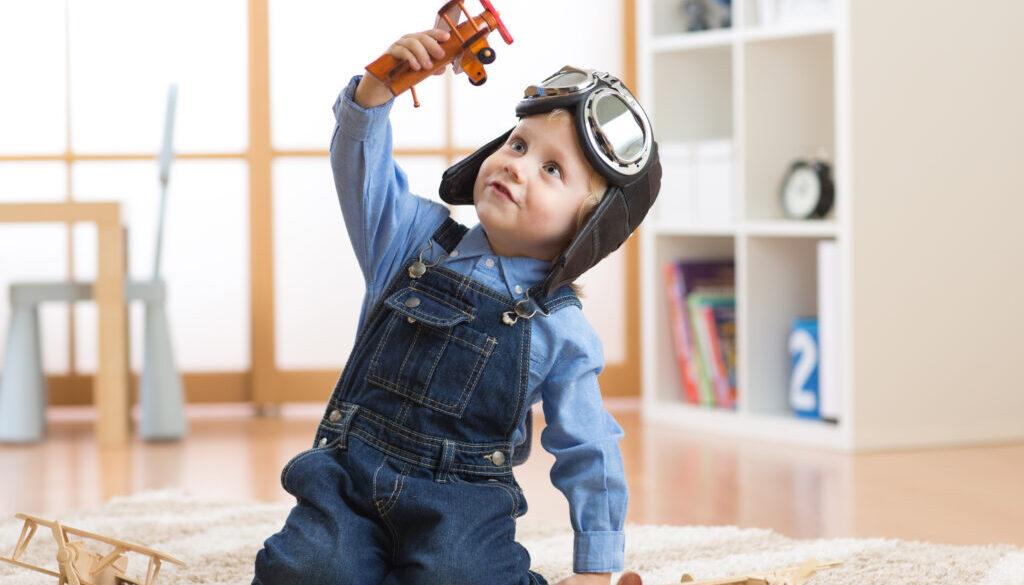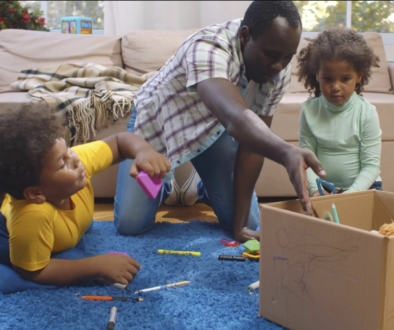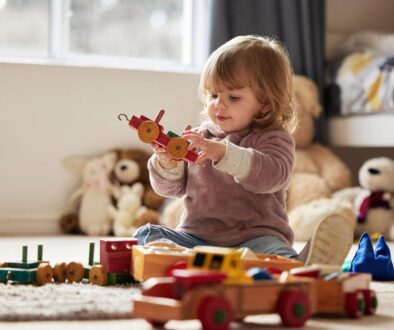Stages of Play

Have you ever noticed that your child enjoys playing by themselves and wondered if it’s normal? Or maybe you have noticed that your child enjoys watching others play, but doesn’t join in. These are actually normal phases of development children go through, referred to as stages of play. Check out this week’s blog for more about the 6 stages of play.
1. UNOCCUPIED PLAY (Birth – 3 months)
Yes, play starts at birth! At this stage, babies make a lot of random movements with their arms, legs, hands, and feet. This is the beginning of play, and you can support this by talking, singing and lots of eye contact with your baby.
2. SOLITARY PLAY (Birth – 2 years)
At this stage, children start to play on their own. Despite what our adult minds think, children at this stage of play are quite happy exploring and discovering the world on their own. They are not quite ready to play with other children just yet.
3. SPECTATOR/ONLOOKER PLAY (2 years)
Based on the name, children at this stage usually look/watch other children play but do not join in or play with them. They may also have many questions of what the other children are doing etc.
4. PARALLEL PLAY (2+ years)
Parallel play is when children begin to play side-by-side but are not playing with each other. It may seem that they have no interaction, but they are paying attention to each other, sometimes even copying one another. This is the beginning of the desire to be with other children.
5. ASSOCIATIVE PLAY (3-4 years)
Children at this stage start to interact with other children they are playing with. They start asking questions and begin to talk about the toys and what they are making. This is the beginning of understanding how to get along with others.
6. SOCIAL/COOPERATIVE PLAY (4+ years)
Here you will see the beginning of teamwork. Children at this stage start to play with others for a common purpose. This is the beginning of socializing with other children and creating connection and relationships!





